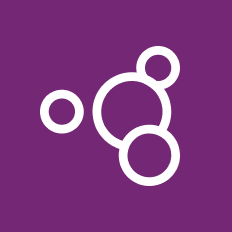Introduction to Azure AI and Power Platform
Azure AI provides advanced machine learning models, cognitive services, and custom AI capabilities, while Power Platform offers no-code/low-code tools to automate workflows and build apps. Together, they enable businesses to create AI-driven applications and automate repetitive tasks without extensive coding.
Key Components for Integration
- Azure Cognitive Services: AI capabilities such as vision, speech, and language analysis.
- Power Automate: Workflow automation tool for integrating Azure AI outputs into business processes.
- AI Builder: Low-code AI model builder within Power Platform.
- Power Apps: Custom application development platform with AI integration capabilities.
- Power BI: Data visualization tool to present AI-driven insights.
Step 1: Setting Up Azure AI Services
Start by creating Azure Cognitive Services resources in the Azure portal. Obtain API keys and endpoints for services such as Text Analytics, Form Recognizer, or Language Understanding (LUIS). Configure secure access using Azure Active Directory (AAD).
Step 2: Configuring AI Builder in Power Platform
In Power Platform, navigate to AI Builder and select a prebuilt model or create a custom model. Train the model using sample datasets such as customer feedback for sentiment analysis or invoices for form recognition.
Step 3: Automating Workflows with Power Automate
Create a new flow in Power Automate and integrate it with Azure AI APIs using HTTP requests. Add triggers, such as receiving an email or a new form submission, and connect AI Builder to analyze the content. Configure actions based on AI results, such as updating records in Microsoft Dataverse or sending automated responses.
Step 4: Building AI-Powered Apps with Power Apps
Use Power Apps to build custom applications that leverage AI Builder models. Add controls such as text input for sentiment analysis or image upload for form recognition. Bind these controls to AI Builder models and display results instantly in the app.
Step 5: Visualizing Results with Power BI
Connect Power BI to the output of Power Automate or Azure Cognitive Services to visualize AI insights. Build dashboards displaying trends, predictions, and AI-driven recommendations for real-time decision-making.
Case Study: Automating Customer Support with Azure AI and Power Platform
A telecommunications company integrated Azure Text Analytics with Power Automate to analyze customer feedback from multiple channels. Using sentiment analysis, negative reviews triggered automated support workflows in Power Apps. The solution reduced response times by 60% and improved customer satisfaction.
Best Practices for Integration
-Secure Data Access: Use Azure Key Vault for managing API keys.
-Optimize Model Training: Regularly update AI Builder models with new data.
-Ensure Data Compliance: Adhere to GDPR and other industry regulations.
-Enable Monitoring: Use Azure Monitor to track AI service performance.
-Promote Scalability: Use Azure Logic Apps for complex integrations beyond Power Automate capabilities.
Common Challenges and Solutions
- Integration Delays: Optimize Power Automate flows and reduce API latency.
- Model Accuracy Issues: Provide high-quality training datasets.
- Cost Management: Monitor usage with Azure Cost Management tools.
- Workflow Errors: Use Power Automate error handling mechanisms.
Future Trends in AI and Power Platform Integration
-AI-Driven Low-Code Development: Improved AI Builder templates for faster automation.
-Multimodal AI Models: Combining text, voice, and image processing within workflows.
-Real-Time Insights: Enhanced Power BI integrations for live dashboards.
-Collaborative AI Agents: Agents working across Power Apps and Teams for task automation.
Conclusion
Integrating Azure AI with Power Platform using AI Builder offers powerful solutions for automating workflows, improving efficiency, and enabling intelligent decision-making. By following best practices and leveraging the full potential of Azure services, businesses can drive digital transformation and unlock new opportunities for innovation.

